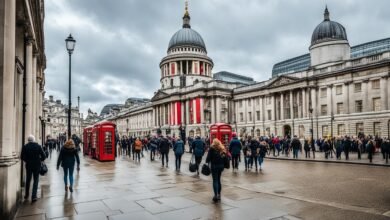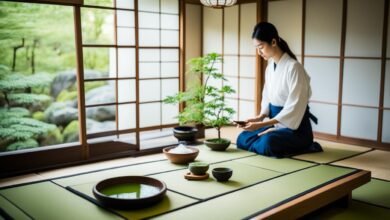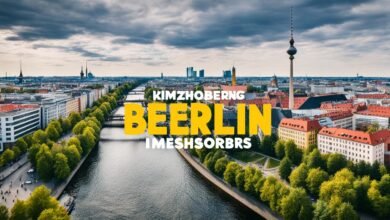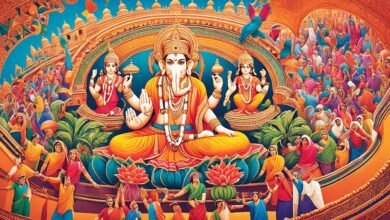Table of Contents
Venture beyond the common tourist spots in Southeast Asia. You’ll find hidden gems full of unique cultural experiences and untouched natural landscapes. These offbeat locales are perfect for connecting with indigenous communities and trying sustainable eco-adventures. And, they let you see the real charm of the area, instead of the usual tourist traps.
Mountain landscapes and terraced fields in Binh Lieu, Vietnam are breathtaking. The ancient city of Mrauk U in Myanmar is both mystical and fascinating. These are just a few examples of what awaits you in Southeast Asia. Northern Thailand, Northeastern Cambodia, Laos, and the Northwestern frontier of Vietnam show a rich tapestry of local life and traditions.
To keep the cultural heritage of these offbeat Southeast Asian destinations alive, we must act responsibly. We should support indigenous communities and follow sustainable tourism practices. This way, you can experience the true beauty of Southeast Asia. By doing so, you dive deep into cultural immersion and experiential travel.
Unveiling the Hidden Gems of Southeast Asia
Southeast Asia is known for stunning landscapes and diverse cultures. It welcomes millions yearly. But hidden from the usual paths lie offbeat Southeast Asian destinations. They promise a more real adventure.
These hidden gems are often missed by many. They offer a chance to see unique traditions and enjoy nature without the usual tourist crowd. Places like the quiet Binh Lieu in Vietnam or the ancient Mrauk U in Myanmar let you get closer to locals and experience sustainable eco-adventures. This is where you can truly feel the Southeast Asian culture.
Areas like Northern Thailand and Northeastern Cambodia show off rich history and beautiful nature. It’s important to visit in a sustainable tourism way. Doing so helps keep these places and their local ways alive.
| Offbeat Southeast Asian Destinations | Cultural Immersion Experiences | Sustainable Tourism Practices |
|---|---|---|
| Binh Lieu, Vietnam | Authentic homestay experiences with local ethnic groups | Minimizing environmental impact, supporting conservation efforts |
| Mrauk U, Myanmar | Exploring ancient monuments, temples, and ruins | Collaborating with local stakeholders for responsible tourism |
| Northern Thailand | Engaging with remote hill tribe villages and ethnic communities | Preserving the delicate balance between communities and environment |
| Northeastern Cambodia | Discovering the ancient grandeur of the Khmer Empire | Respecting local customs and traditions, supporting local businesses |
| Laos | Immersion in the traditional way of life of hill tribe communities | Minimizing environmental impact, promoting eco-tourism initiatives |
| Vietnam’s Northwestern Frontier | Exploring vibrant hill tribe markets and trekking adventures | Collaborating with local communities to develop responsible tourism |
Binh Lieu, Vietnam: Immersive Exploration into Traditional Life
Stunning Mountain Landscapes and Vibrant Terraced Fields
Binh Lieu is a beautiful mountainous district in Vietnam’s Quang Ninh province. It’s famous for its lush forests, colorful terraced fields, and imposing mountain views. These sceneries invite visitors to step away from their busy lives. They offer a peaceful glimpse into the beauty of rural Vietnam.
Authentic Homestay Experiences with Local Ethnic Groups
In Binh Lieu, visitors can join genuine homestay experiences with local communities. These visits allow travelers to meet friendly locals, understand their way of life, and enjoy their meals. By directly interacting with these groups, travelers can really dive into the area’s diverse culture. This is a unique chance to experience a lesser-known part of Vietnam fully.
Joining the 2-day 1-night tour in Binh Lieu is a great way to explore both nature and culture. It involves hiking through mountains and seeing beautiful terraced fields up close. Plus, travelers can meet ethnic minority people in their villages. These activities give a real feel of how locals live, away from large tourist crowds.
This tour also includes visits to local villages, offering deeper connections with communities. It’s a valuable way to learn about the traditional lifestyle of the ethnic minorities. Through this journey in Binh Lieu, travelers can discover unique aspects of Vietnam. They can truly submerge themselves in the area’s cultural legacy.
Mrauk U, Myanmar: Mystical Ancient City Off the Radar
In Myanmar, there’s a special place called Mrauk U. It’s a hidden gem waiting to be discovered. This mystical destination has a unique beauty and a rich historical past that you won’t find on the usual tourist trails.
Cultural and historical heritage wait for you here. The 5-day tour of Mrauk U lets you see ancient monuments, temples, and ruins. These places tell stories of Mrauk U’s time as a powerful kingdom capital.
Mrauk U offers a chance to really understand Myanmar’s past and culture. This is without the crowds of well-known spots. So, you can step back in time without the rush of many tourists.
This tour is all about gentle adventures and getting to know the local way of life. You can explore and learn in a way that’s respectful of the community and the land.
Northern Thailand: Cultural Tapestry Beyond the Beaten Paths
In Northern Thailand, there’s more to discover than what’s well-known. You can find cultural and natural treasures off the usual tourist paths. It allows for a more real and deep experience.
Chiang Mai and the Golden Triangle
This 8-day tour offers an adventure through Northern Thailand’s beauty. You’ll see amazing landscapes, ancient sites, and meet various ethnic groups. Key spots include Chiang Mai, a bustling city, and the Golden Triangle where three countries meet.
Undiscovered Hill Tribe Villages and Remote Natural Wonders
The tour goes further into hidden hill tribe villages and finds natural gems. You’ll see old temples, beautiful waterfalls, and peaceful lakes. These unique stops let you learn more about local culture, traditions, and history.
Focus is also on caring for the land and its people. This way, your visit supports the local environment and communities. It makes your trip more memorable and gives back to those you meet.
Authentic experiences in offbeat Southeast Asian locales?
Discovering Southeast Asia’s less-known spots lets you dive into real cultural experiences. You get to meet indigenous folks in a meaningful way.
Responsibly Engaging with Indigenous Communities
To keep local traditions alive, it’s key to hang with the locals the right way. Respect their ways. Buy from local shops and do what’s cool with the community.
Sustainable Tourism Practices for Cultural Preservation
For real green and local love, choose eco-friendly travel ways. Try to leave nature untouched, and support keeping it that way. Work with the locals on good tourism options, to respect everyone’s space.
By being careful of cultures and nature, we can keep these offbeat places perfect. They’ll stay real and great for our kids and grandkids to find.
Northeastern Cambodia: Unveiling Ancient Khmer Grandeur
Northeastern Cambodia stands out for its ancient history, hidden away from the usual tourist spots. It’s a special place for those looking to see the grandeur of the Khmer Empire without the crowds. This 15-day trip leads visitors to remarkable yet lesser-known historic sites like Preah Vihear and Koh Ker. These were key places in Khmer civilization.
Preah Vihear and Koh Ker: Lost Cities of the Khmer Empire
Preah Vihear, sitting high on a mountain and a UNESCO site, showcases Khmer architecture at its best. Its detailed temples and breathtaking views leave visitors in awe. Koh Ker, an ancient Khmer capital, is filled with unique ruins and monuments. It gives us a glimpse into the area’s vibrant history.
This tour is not just about history but also about nature. Visitors will see unique wildlife in protected areas. They can also enjoy the peaceful views of the Mekong River. This adventure off the beaten track allows visitors to find hidden gems. It helps them understand the deep impact of the Khmer Empire.
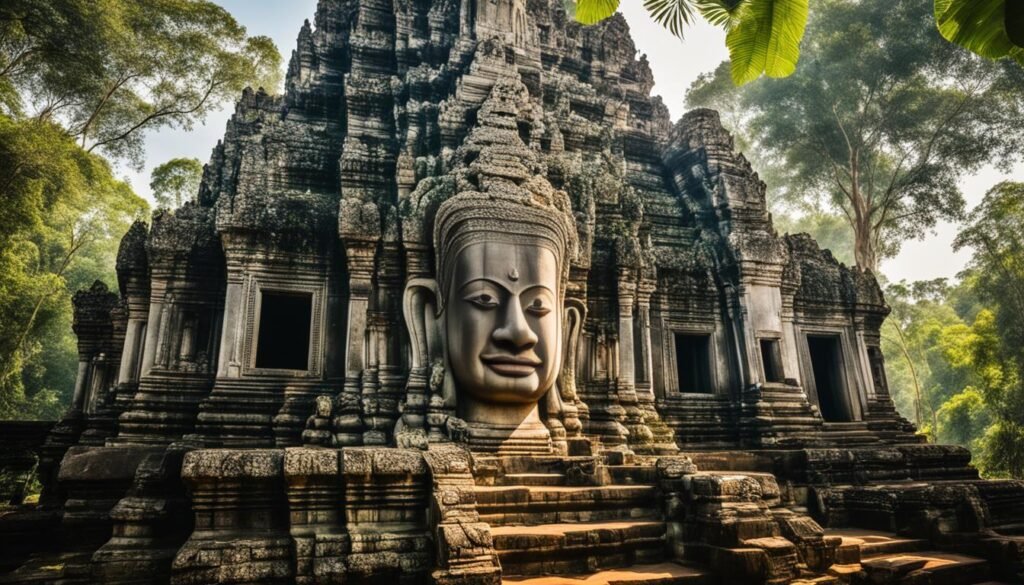
Laos: The Tranquil Charm of the Forgotten Southeast
Laos isn’t on the radar for many, but it’s a gem worth exploring. It has offbeat places rich in peaceful beauty and true cultural vibes.
Luang Namtha and Oudomxay: Immersion in Authentic Hill Tribe Life
For 14 days, you’ll dive into Laos’ northern gems: Luang Namtha and Oudomxay. Here, the local hill tribes live as they have for ages.
You’ll see their daily lives and explore beautiful natural spots. This journey offers a look into a world untouched by hurried modern life.
The 4,000 Islands: River Life and Rustic Island Escapes
The 4,000 Islands, in the south, sits in the Mekong River. It’s a peaceful haven with traditional island living. Here, life moves at a different, slower pace.
By visiting these unique spots, you’ll understand a piece of Laos’ cultural heart. This is the beauty of exploring the “hidden” areas of Southeast Asia.
Vietnam’s Northwestern Frontier: Untamed Beauty and Ethnic Diversity
Vietnam’s Northwestern frontier is relatively unknown to many but holds hidden gems. It offers travelers a chance to explore untouched natural beauty and various ethnic groups.
Ba Be Lake and Ban Gioc Waterfall: Natural Wonders of the Northwest
A 9-day tour in this region showcases breathtaking scenery. It includes a visit to Ba Be Lake, called the “Jade of the mountainous region.” Also, a stop at the Ban Gioc Waterfall, a top natural wonder in Vietnam.
Sapa and Bac Ha: Colorful Hill Tribe Markets and Trekking Adventures
The journey doesn’t just stop at beautiful sights. It also lets travelers dive into the local cultures. You can visit vibrant markets in Sapa and Bac Ha and go trekking in lush landscapes.
These experiences offer a true insight into the local way of life. They showcase the rich tapestry of cultures and the untouched beauty of the area.
Exploring this part of Vietnam shows a different side of the country. It introduces genuine cultural interactions and stunning natural scenery, often missed by many visitors.
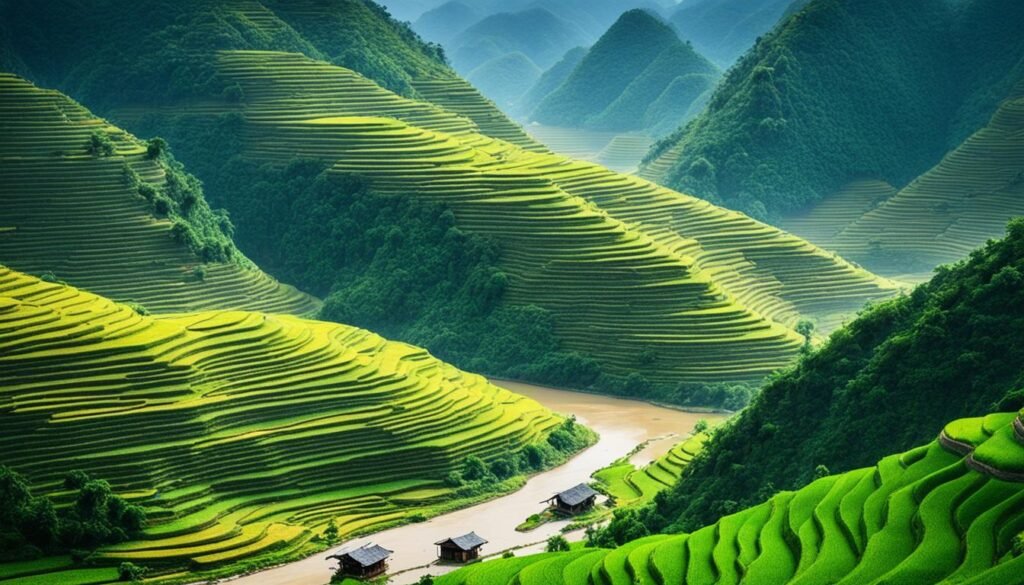
Indonesia’s Sumatra: A Forgotten Paradise
Sumatra island is a hidden paradise. It’s perfect for those who seek peace and love nature. Travelers here can explore beautiful nature and rich cultures.
Lake Toba and Lake Maninjau: Volcanic Wonders in Pristine Settings
Lakes like Toba and Maninjau sit in old volcanic craters. They’re stunning and clear, perfect for a quiet retreat. Sumatra’s land also covers dense forests, full of diverse wildlife.
These places are quiet and not crowded. This means visitors get more close-up time with Sumatra’s true beauty. They’re a break from the usual big tourist spots.
Visiting Sumatra’s hidden spots lets you unwind. You can enjoy calm surroundings and explore peacefully. This also helps protect the area.
By visiting less-known parts of Sumatra, you’re in for a big treat. You learn more about the country’s rich cultures and remarkable nature.
Malaysia’s Kapas Island: Secluded Beachside Bliss
Kapas Island is a hidden paradise off Malaysia’s coast. It’s perfect for those who want beautiful beaches and an island life without big crowds. This place isn’t well known by many, making it an ideal spot to unwind. With its white sand and clear waters, it’s a peaceful escape from busy beaches elsewhere.
The Captain’s Longhouse is a top place to stay on Kapas Island. Here, guests can experience the local way of life thanks to The Captain, a friendly local. He treats visitors like friends and shows them what life is really like on the island. It’s a unique and heartwarming way to explore this off-the-beaten-path corner of Southeast Asia.
What also makes Kapas Island special is its far-off location and simple set-up. There’s not too much tourist stuff here, making it easy to relax. You can enjoy the island’s untouched beauty and the kind-hearted locals. Whether you want a quiet beach break or a deep dive into Malaysian island living, Kapas Island is a true gem. It perfectly blends peace and realness.
